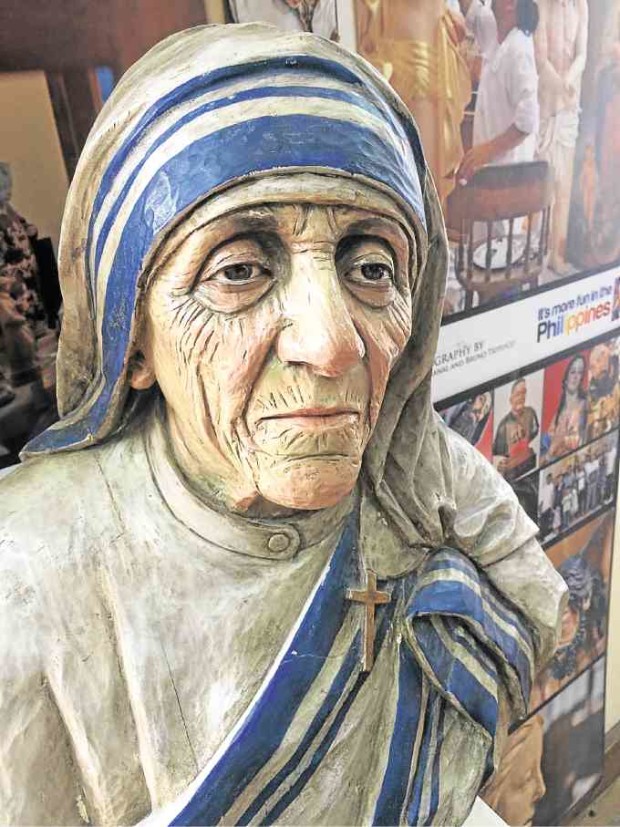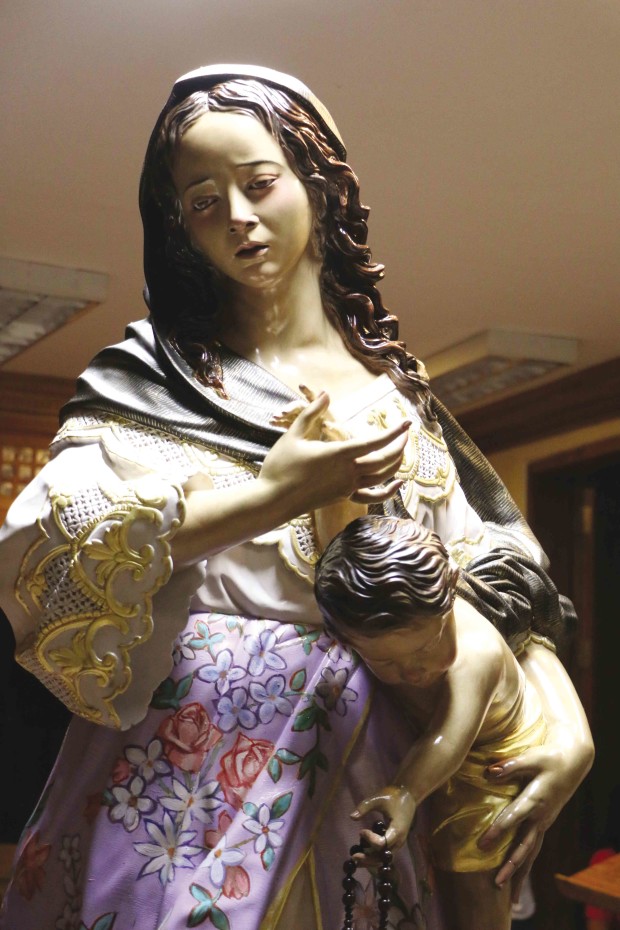Art thrives in village of woodcarvers
GUAGUA, PAMPANGA—When craftsmen in Barangay Sta. Ursula here stop working—like on the feast day of their patron saint every Oct. 21 or on Mondays when they all rest and pack their pait (chisels)—the signs of an active woodcarving village still abound.
More than 100 shops converted from garages or gardens dot the streets. Blocks of wood of varying sizes are dried on street corners. Rain or shine, the outdoor displays of furniture pieces and santo (images of saints) go untouched.
Production hardly stops in Sta. Ursula, so you can scout for items, place an order or buy straight.
“Prices are cheaper. An unfinished chair [minus upholstery, for instance] can fetch P3,000,” said Crescencio David, the village head. He is familiar with prices, marketing the furniture to select clients in northern Luzon.
For a shopping adventure, all you need are sturdy legs, eyes keen on good designs, and price haggling skills.
Article continues after this advertisementOne can expand the search along the Bacolor and Guagua portions of the Jose Abad Santos Avenue (formerly Gapan-San Fernando-Olongapo Road), where several artisans and merchants have set up display stores-cum-shops.
Article continues after this advertisementOr you can just watch them at work, when they allow you.
Sta. Ursula is acclaimed as the center of Betis, one of Pampanga’s ancient towns. Annexed to Guagua in 1903, Betis continues to thrive due in part to woodcraft.
That veritable status of Sta. Ursula is due to its being the base of maestro Juan Flores. Sailing for Manila at age 16 because he did not want to be a fisherman, Flores worked for master sculptors. Returning three years later, he was said to have revitalized woodworking in the village that is known to be good in carving fishing boats.
“Every man, every boy had a job in the time of Apung Juan. There was zero unemployment,” said councilman Oscar Sarmiento, echoing the accounts of his elders.
Flores made pieces for the interiors of Malacañang since the time of Commonwealth President Manuel L. Quezon and up to the stint of then first Lady Imelda R. Marcos, until he suffered a stroke in 1979.
Living tradition
The tradition lives on because Flores had trained many proteges. One of them, Monico Nuqui, in turn, taught woodcarving and carpentry skills to his brothers, Jose, Jose II, Domingo and Alfonso.
Alfonso still makes chairs and urno [case] of santo at 78, and taught all his sons Ferdie, Joseph and Mario to be carvers.
This passing of the torch is repeated many times over, without force. Alfonso Layug, a boat maker, let his son Wilfredo shape images out of mud. Wilfredo, who rose to prominence for his ecclesiastical art pieces, saw his youngest son Joseph following in his footsteps.
In harder times, woodcarvers take to driving tricycles or working abroad as carpenters. “But they easily pick up the craft again because they live, eat, breathe on woodcarving,” said Jesus Calma, a former municipal employee who returned to furniture-making.
Aside from informal apprenticeship, David, Sarmiento, Wilfredo Layug and Calma sound off the need for a long-term training program for woodcarving, whether for religious arts or furniture.
Lack of wood
“The industry, I would say, is 60 percent alive. The challenges are lack of wood, the competition posed by furniture makers in Indonesia, Malaysia and China and less enthusiasm shown by our young people for the craft. When you know how to carve wood and you’re good at it, you will never go hungry,” David said.
“Back then, children learn the craft by helping around in shops. Now, they want to be paid at once,” Nuqui rued.
A mini-forest sustained by Labuan River can supply wood, he said. Choked by lahar after the Mt. Pinatubo eruptions in 1991, the river has been revived by the waters of Gugu River.
Some, like Dante Blanco, don’t let the absence of formal schooling stop them from excelling. He won the recent International Woodworks Competition in Nepal.
Formal studies helped Wilfredo Layug raise standards, enabling him to introduce finer techniques, like estofado and encarna.
“The eagerness to learn is not lacking among younger artists. When Fidel Sarmiento (president of the Art Association of the Philippines) came to judge a competition, he told the participants: ‘You are not woodcarvers. You are sculptors,’” Layug said.
GETTING THERE
From Manila, take the North Luzon Expressway. By car, bus or van, take the San Fernando toll gate. You can travel up to Bacolor via Jose Abad Santos Avenue. Turn left to San Guillermo Church. Take the old road.
If you are commuting, take a jeepney at Dolores intersection. Beside a fast-food chain there is the jeepney terminal plying the Bacolor-Guagua route via the old road. Landmarks in Bacolor are Don Honorio Ventura Technological State University and Lourdes Church.
Stop in front of Betis church. Turn left, right to Sta. Clara monastery. Farther up is Sta. Ursula.
IN THE KNOW
Sta. Ursula (population: over 5,000) is one of seven villages in the Betis district of Guagua, Pampanga. The six others are San Miguel, Sta. Ines, San Agustin, San Nicolas, San Juan Nepomuceno and San Juan Bautista.
Paglalabuan is the old name of Sta. Ursula, which is beside the Labuan River leading to Pasac River. In olden times, livelihood here was fishing (mamyakus) and boat-making (mandaras).
Number of woodcarvers making furniture: 200 to 300
Number of makers of religious pieces: 20 to 50
Organizations: Mandukit Aluagi of Sta. Ursula, founded by Wilfredo Layug in 2012; Woodcarvers of Betis Multipurpose Cooperative, also founded 2012.
Dukit Festival, began in 2013, is held every Oct. 20
Source: Interviews with Crescencio David, Jesus Calma, Oscar Sarmiento, Wilfredo Layug and Alfonso Nuqui


